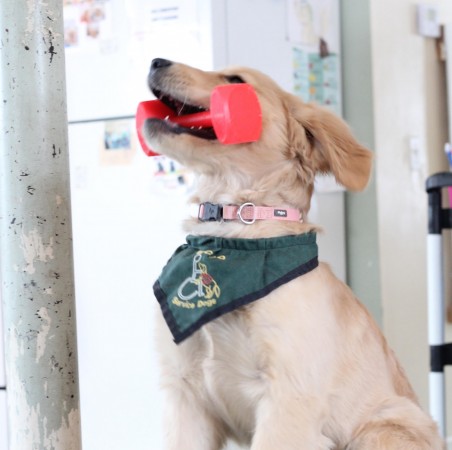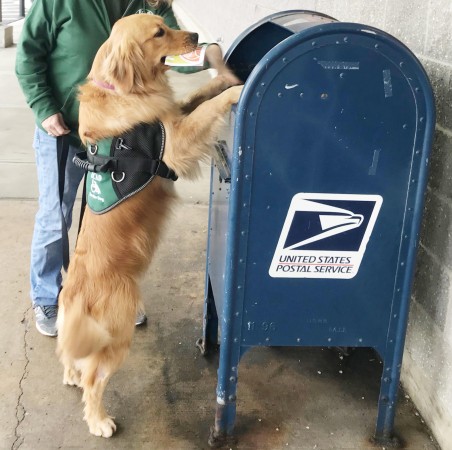Have you seen the ECAD Service Dogs live cam? These adorable puppies are hard at work training to become Service Dogs. In today’s blog post, we’ll take you behind the scenes to see what the Service Dog training process looks like and why it matters.
It’s not hard to find a faithful canine companion, but the process of training a Service Dog takes more time and effort than you might think. With decades of experience under their belt, ECAD knows that every little step along the way pays off in the long run. Through extensive training, Service Dogs are able to provide highly skilled, highly dependable support to people facing extreme challenges every day. Putting in the work is a small price to pay for changing more lives for the better.
It Starts at Home
Some things can’t be taught. To ensure that Service Dogs being placed are healthy, happy, and intelligent, ECAD sources dogs from an in-house breeding program as well as other quality breeders within industry networks. Most of the dogs ECAD trains are Golden Retrievers and Labradors — top-notch companions who are eager to please. Raising our puppies from birth provides the unique opportunity to start getting them adjusted to different experiences during their earliest and most formative years. These dogs won’t be placed with their forever partners for a while now – but they are being preparing from day one.
Off to School
ECAD’s Service Dog training program isn’t your everyday obedience class. Puppies as young as eight weeks join the Nursery Team and spend two months living with a volunteer who teaches them the basics, such as commands like “sit” and “come” as well as skills like riding in a car and sleeping in a crate. The dogs then move on to the “ECADemy,” which focuses on tailoring the dogs’ skills to the needs of a forever partner with disabilities.
By the time ECAD places a Service Dog, they will have spent 1500 hours training it. This is six times more than the 250-hour requirement.
Matchmaking
When the dog is about 18 months old, ECAD is looking at its specific personality and abilities in order to pair it with an applicant. If, after extensive interviews with the client, ECAD believes a certain dog is a good match, they finish out its training by incorporating specific skills that will be necessary for its forever partner. ECAD places dogs with people who come with a wide variety of needs — from physical disabilities like Parkinson’s Disease and Cerebral Palsy to mental disabilities like Autism and veterans suffering from PTSD. A service dog can pull a wheelchair, seek help during a medical crisis, or even prevent a dangerous situation like a child bolting into traffic while out in a public place.
While providing our clients with dependable, intelligent dogs is a major reason ECAD goes through such an intense training process, the motivation goes beyond simply adding more skills to each dog’s repertoire. Extensive individualization and personalization are what make ECAD dogs a step above the rest. Like a doctor prescribing medicine, there’s no such thing as a one-size-fits-all treatment. Therefore, we don’t hand out one-size-fits-all dogs. Each client is different, so ECAD trains each dog to assist each individual needs and preferences.
Want to get an inside look at some future service dogs? Check out the live cam every Tuesday from 11am to 1pm eastern time. The puppies you’ll see are just at the start of a long, exciting journey.






